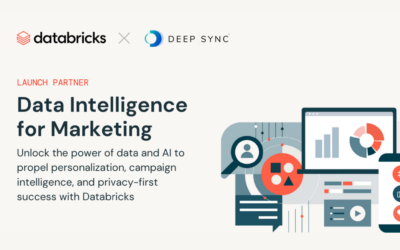If you’re like most businesses, you’re probably collecting a ton of data about your customers. Some companies even collect data without knowing when they’ll use it—just in case they need it in the future.
But this approach isn’t effective. You need resources to collect data. Unused data means wasted resources—not to mention data left unused for too long may no longer be relevant. So, it’s important to use your data wisely.
Using your data to target a smaller market can help you spread the word much faster than broad targeting. The intention behind broad targeting is typically that you want everyone to know how your product can help. But, this means diluting your messages, sacrificing customer experience, and blurring your overall product strategy. You’ll end up with a generic product and messaging strategy that appeals to no one. In the meantime, your competitors convert leads left and right with more relevant and specific strategies.
This is where using data for audience targeting comes in.
- What Exactly Is Audience Targeting?
- What Is Target Audience Analysis?
- Explaining Target Market vs. Target Audience
What Exactly Is Audience Targeting?
Audience targeting helps you narrow down your target market into a specific segment of your potential customers. Your customer pool might include people other than your specific target audience, but focusing on your target audience will help you inform your business decisions.
You can segment your target audience based on various factors, such as demographics, behaviors, or roles.
Having a target audience is like using a GPS to navigate the vast landscape of consumers, helping you zero in on those most likely to be interested in your products or services. With a smaller pool to target, you can focus your efforts on winning that market. In time, you can get more resources to expand and get traction in segments outside of your target audience.
What Is Target Audience Analysis?
Once you’ve settled on a target audience, target audience analysis narrows down more specific characteristics of your target audience.
On top of demographics, this involves gathering information about your target audience’s life before, during, and after they use your product. Think of it as a puzzle: The more pieces you have about your target audience, the easier it is to paint an accurate picture of what they need.
Using target audience analysis, you can tailor your strategies to meet the specific needs and interests of your target audience, increasing the effectiveness of your campaigns.
For example, let’s say you’re a property management company that’s developed new software to streamline the vacation rental process. Your target audience might be homeowners who are looking to rent out their homes.
By analyzing data about these owners—such as the type of property they want to rent, their location, and the challenges they face—you can gain a better understanding of their needs and tailor your marketing messages accordingly.
Explaining Target Market vs. Target Audience
While “target market” and “target audience” are often used interchangeably, they have distinct meanings.
Your target market refers to the broad group of consumers who are likely to be interested in your products or services. It’s like the ocean that contains your potential customers.
On the other hand, your target audience is a more specific segment within that market, characterized by particular traits or behaviors that make them more likely to respond to your marketing efforts. It’s like a school of fish within the ocean, but only those that live at a particular depth.
Let’s say that you sell project management software for B2B companies. In this case, your target market might be B2B companies. Yet, this description is still too broad. After an analysis, you discover that your ideal target audience is founders of small tech startups located in the U.S.
Discover More About Your Target Audience With Deep Sync
Enhancing your data allows you to delve deeper into your customer data, providing a more comprehensive understanding of who your customers are.
Once you’ve gathered this information, you can use data analytics to create Ideal Customer Profiles (ICPs). These profiles are essentially detailed descriptions of your most valuable customers. You can use these profiles to identify potential customers who share similar characteristics. Check out available audience segments and build lookalike audiences of your ICPs on Deep Sync One, today.












0 Comments